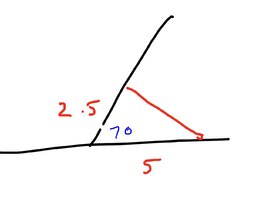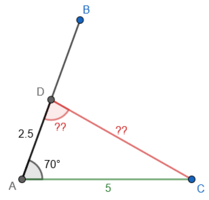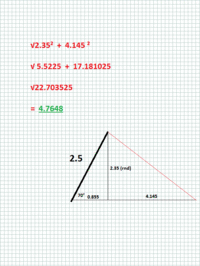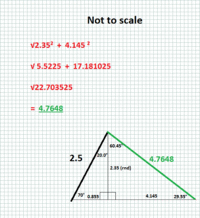I just need help drawing diagram for this trig question!!! (answer not needed, just a diagram for this question!)
A retaining wall is leaning at an angle of 70° to the horizontal. A rigid support is to be placed 5.0 m from the base of the wall and it will be attached to the wall 2.5 m from its base. Determine the length of the support to the nearest tenth of a mere and measure of the angle between the support and the wall to the nearest degree.
A retaining wall is leaning at an angle of 70° to the horizontal. A rigid support is to be placed 5.0 m from the base of the wall and it will be attached to the wall 2.5 m from its base. Determine the length of the support to the nearest tenth of a mere and measure of the angle between the support and the wall to the nearest degree.
Last edited by a moderator:




